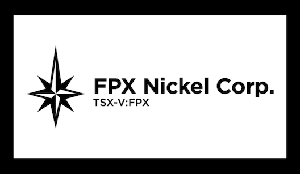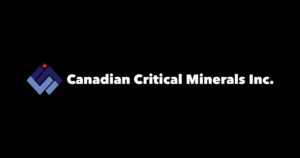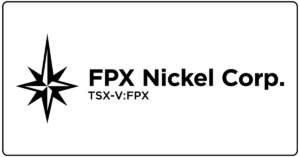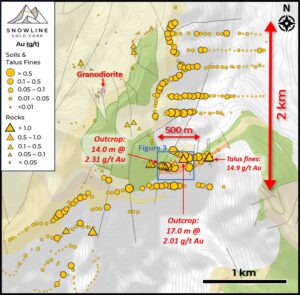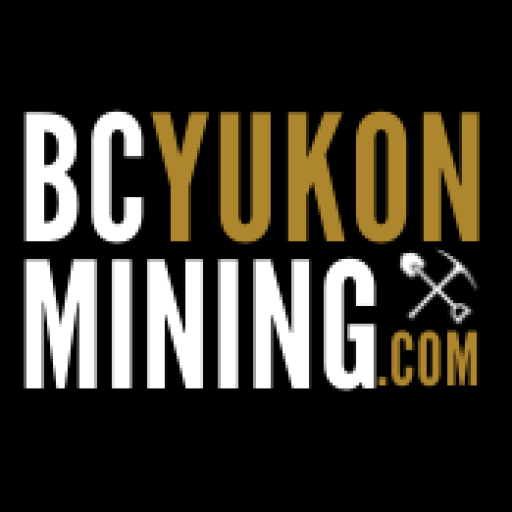Vancouver, British Columbia, Canada, March 18, 2021, Klondike Gold Corp. (TSX.V: KG; FRA: LBDP; OTC: KDKGF) (“Klondike Gold” or the “Company”) is pleased to report results of 2020 Phase 4 diamond drilling at the Lone Star Zone on the Company’s 586 square kilometer Klondike District Property near Dawson City, Yukon Territory.
These latest results continue to demonstrate strong intervals of near-surface gold both within and outside the currently defined Lone Star Zone gold mineralization model shell. This is encouraging and affirms the Company’s efforts to outline gold mineralization that will form the basis of a maiden resource estimate planned for 2022.
Highlights from the thirty holes reported here from Lone Star Zone include:
- 36.55 m of 1.66 g/t Au from 7.75 meters downhole in LS20-373
- 41.00 m of 1.00 g/t Au from 10.00 meters downhole in LS20-375
- 34.10 m of 0.72 g/t Au from 2.40 meters downhole in LS20-376
- 13.40 m of 1.18 g/t Au from 0.60 meters downhole AND 15.00 m of 1.43 g/t Au from 36.00 m downhole in LS20-380
- 96.00 m of 1.01 g/t Au from 15.00 meters downhole in LS20-381
The 2020 Phase 4 drill program consisted of 30 short holes totaling 2,893 meters targeting the Lone Star Zone across a 3,265 meter length. (See also News Releases October 12, 2020 and February 3, 2021).
Peter Tallman, Klondike Gold’s CEO stated, “The best holes reported today target gaps in the Lone Star Zone central area mineralization model. Results are positive and as expected continue to show strong, continuous gold mineralization. Importantly the recognition of sheeted quartz vein subzones containing higher grades of gold is also a very positive and interesting result. Other drill assays reported today from outside the current extent of our Lone Star Zone mineralized envelope show there are excellent opportunities to significantly expand in all directions including at depth. We have an abundance of targets to test with our 2021 drilling that will build toward our goal of completing a maiden resource estimate, and the team is excited to get started on this year’s field work.”
SUMMARY OF RESULTS:
Lone Star Zone Central Area:
A cross-section of central Lone Star Zone (see Figure 1) depicts gold mineralization starting at surface, extending approximately 100 meters in width to approximately 75 meters vertical depth.
The upslope, downslope and depth “Open” areas require further testing to find limits of mineralization in these directions.
A significant outcome of this program has been the identification of sheeted quartz vein subzones containing higher gold grades correlating across strike and down dip, for example the three deep purple intersections in LS20-381, LS16-70, and LS16-49. The Company intends to drill test these sheeted quartz veins as priority targets in 2021.
Figure 1: Geometry of the middle of the central area of Lone Star Zone from cross-section 11975E including holes LS20-376 and LS20-381 (this news release).
In the central Lone Star Zone (see Figure 2) ten holes were drilled: LS20-378, LS20-382, LS20-373 and LS20-381, LS20-375 and LS20-380, LS20-374, LS20-378, LS20-377, LS20-379 from west to east.
LS20-373 and LS20-381, LS20-375 and LS20-380 were drilled at 245 azimuth, turned 45 degrees from the usual 200 azimuth drill direction. These affirmed the consistency of gold grades and orientation of mineralization, and upgraded confidence in the model with intercepts such as 1.01 g/t Au over 96.0 meters in LS20-381 among others (see Table 1).
LS20-374 and LS20-379 notably tested outside the southern edge of central Lone Star mineralization and both intersected gold mineralization including 0.69 g/t Au over 7.0 meters in LS20-379 indicating the limit of mineralization remains open for expansion to the south.
LS20-382 tested the western edge of the central Lone Star Zone. The Lone Star Zone has been offset to the north here by a north-south fault; LS20-382 was designed to follow gold mineralization across it. LS20-382 successfully intersected 0.23 g/t Au over 38.0 meters from 31.0 meters, including a higher sub-interval of 0.61 g/t Au over 6.0 meters from 48.0 meters. This mineralization is west of and outside our current mineralization model. It is interpreted this intersection is the continuation of the main Lone Star Zone trend across the offset fault connecting on strike with gold mineralization at O’Neill Gulch located 600 meters still further west. The Lone Star Zone remains open to the west and this target area has significant potential to expand the mineralization model (see Figure 3).
Figure 2: Plan map of Lone Star Zone central area with 2020 drill holes labelled (this news release).
Figure 3: Map of 5 km extent of Lone Star Zone, with 2020 drilled areas labeled as West, Central Zone, and East.
East Area:
To the east of the main Lone Star Zone, LS20-372 intersected a wide interval of 0.42 g/t Au over 57.55 meters from 19.45 meters, including sub-intervals of 1.06 g/t Au over 8.0 meters from 33.0 meters, and 1.31 g/t Au over 7.0 meters from 50.0 meters. This mineralization is a 60-meter step-back outside our current mineralization model, is all still within 50 meters vertical of surface, remains open, and significantly upgrades the potential of this area for additional lateral and deeper drilling.
Further east, LS20-369 intersected 1.07 g/t Au over 13.0 meters from 70.0 meters including 9.4 g/t Au over 0.5 meters located 200+ meters outside the Lone Star Zone mineralization model with significant potential for expansion.
The important target of most of these holes successfully established for the first time a continuous geology section connecting the Lone Star Zone (Bonanza Fault) and Stander Zone (Nugget Fault) while mapping structural changes using oriented drill core.
Figure 4: Location map of drilling of the 2020 East area of drilling, Lone Star Zone.
West Area:
Four holes (LS20-383 to LS20-387) testing an anomaly 1.5 km west of central Lone Star Zone intersected extensive carbonate – fuchsite alteration.
Complete assay-interval results for the thirty holes LS20-358 to LS20-387 referenced in this press release are shown in the table below. True thicknesses are estimated to be 70% to 100% of intersection length.
| Hole ID | From (m) | To (m) | Au g/t | Length (m) |
| LS20-358 | 30.0 | 32.0 | 0.30 | 2.00 |
| LS20-359 | 49.0 | 50.0 | 0.30 | 1.00 |
| LS20-360 | 13.0 | 14.0 | 0.99 | 1.00 |
| LS20-360 | 17.0 | 18.0 | 1.24 | 1.00 |
| LS20-360 | 43.0 | 44.0 | 0.40 | 1.00 |
| LS20-361 | 1.5 | 7.0 | 0.47 | 5.48 |
| LS20-362 | 20.0 | 24.0 | 1.51 | 4.00 |
| LS20-363 | 15.0 | 16.0 | 1.24 | 1.00 |
| LS20-364 | 17.0 | 19.0 | 0.32 | 2.00 |
| LS20-364 | 35.0 | 36.0 | 2.76 | 1.00 |
| LS20-365 | 24.0 | 30.0 | 0.52 | 6.00 |
| LS20-365 | 45.5 | 46.0 | 2.09 | 0.50 |
| LS20-366 | 25.00 | 26.00 | 0.53 | 1.00 |
| LS20-367 | 12.2 | 13.0 | 1.25 | 0.80 |
| LS20-367 | 21.0 | 24.0 | 1.19 | 3.00 |
| LS20-368 | 38.0 | 39.0 | 1.49 | 1.00 |
| LS20-369 | 28.0 | 29.0 | 0.9 | 1.00 |
| LS20-369 | 70.0 | 83.0 | 1.07 | 13.00 |
| LS20-369 | 75.0 | 75.5 | 9.4 | 0.50 |
| LS20-370 | 3.05 | 6.10 | 0.62 | 3.05 |
| LS20-370 | 74.0 | 75.0 | 1.17 | 1.00 |
| LS20-371 | NSA | |||
| LS20-372 | 19.45 | 77.00 | 0.42 | 57.55 |
| LS20-372 | 19.45 | 20.40 | 0.56 | 0.95 |
| LS20-372 | 26.25 | 27.00 | 1.16 | 0.75 |
| LS20-372 | 33.00 | 41.00 | 1.06 | 8.00 |
| LS20-372 | 50.00 | 57.00 | 1.31 | 7.00 |
| LS20-372 | 71.00 | 72.00 | 1.86 | 1.00 |
| LS20-372 | 74.00 | 77.00 | 0.49 | 3.00 |
| LS20-373 | 3.00 | 4.00 | 0.49 | 1.00 |
| LS20-373 | 7.75 | 9.50 | 5.19 | 1.75 |
| LS20-373 | 15.00 | 22.30 | 3.83 | 7.30 |
| LS20-373 | 43.60 | 44.20 | 20.28 | 0.60 |
| LS20-373 | 7.75 | 44.20 | 1.66 | 36.55 |
| LS20-374 | 0.80 | 1.90 | 0.63 | 1.10 |
| LS20-374 | 21.00 | 24.00 | 1.67 | 3.00 |
| LS20-375 | 2.80 | 4.00 | 2.31 | 1.20 |
| LS20-375 | 10.00 | 62.00 | 0.84 | 52.00 |
| LS20-375 | 10.00 | 56.00 | 0.93 | 46.00 |
| LS20-375 | 10.00 | 51.00 | 1.00 | 41.00 |
| LS20-376 | 2.40 | 12.00 | 0.76 | 9.60 |
| LS20-376 | 2.40 | 36.50 | 0.72 | 34.10 |
| LS20-377 | 12.00 | 13.00 | 4.67 | 1.00 |
| LS20-377 | 50.00 | 52.00 | 0.57 | 2.00 |
| LS20-378 | NSA | |||
| LS20-379 | 19.00 | 26.00 | 0.69 | 7.00 |
| LS20-380 | 0.60 | 51.00 | 0.79 | 50.40 |
| LS20-380 | 0.60 | 14.00 | 1.18 | 13.40 |
| LS20-380 | 36.00 | 51.00 | 1.43 | 15.00 |
| LS20-381 | 15.00 | 111.00 | 1.01 | 96.00 |
| LS20-381 | 15.00 | 26.00 | 2.42 | 26.00 |
| LS20-381 | 36.00 | 37.80 | 6.14 | 1.80 |
| LS20-381 | 51.00 | 52.00 | 5.80 | 1.00 |
| LS20-381 | 95.50 | 96.00 | 76.59 | 0.50 |
| LS20-381 | 95.00 | 111.00 | 3.08 | 16.00 |
| LS20-382 | 31.00 | 69.00 | 0.23 | 38.00 |
| LS20-382 | 31.00 | 32.00 | 1.60 | 1.00 |
| LS20-382 | 48.00 | 50.00 | 1.26 | 2.00 |
| LS20-382 | 48.00 | 54.00 | 0.61 | 6.00 |
| LS20-382 | 67.00 | 68.00 | 0.69 | 1.00 |
| LS20-383 | 23.00 | 71.00 | 0.26 | 48.00 |
| LS20-383 | 36.50 | 55.00 | 0.42 | 18.50 |
| LS20-383 | 99.00 | 109.00 | 0.43 | 10.00 |
| LS20-384* | NSA | |||
| LS20-385* | NSA | |||
| LS20-386* | 25.00 | 31.00 | 0.26 | 6.00 |
| LS20-386* | 56.00 | 60.00 | 0.175 | 4.00 |
| LS20-387* | 29.00 | 30.00 | 0.65 | 1.00 |
All holes were analyzed for Au by metallic screen fire assay, except four holes from the “West Area” with asterisk (*) had Au analyses by 30 g FA/AA only.
Figure 5: Lone Star Zone Location Map and Planned 2021 Drilling Targets (red stars).
QUALIFIED PERSONS REVIEW
The technical and scientific information contained within this news release has been reviewed and approved by Ian Perry, P.Geo., Vice-President Exploration of Klondike Gold Corp. and Qualified Person as defined by National Instrument 43-101 policy. Detailed technical information, specifications, analytical information and procedures can be found on the Company’s website.
ABOUT KLONDIKE GOLD CORP.
Klondike Gold Corp. is a Vancouver based gold exploration company advancing its 100%-owned Klondike District Gold Project located at Dawson City, Yukon Territory, one of the top mining jurisdictions in the world. The Klondike District Gold Project targets gold associated with district scale orogenic faults along the 55-kilometer length of the famous Klondike Goldfields placer district. To date, multi-kilometer gold mineralization has been identified at both the Lone Star Zone and Stander Zone, among other targets. The Company is focused on exploration and development of its 586 square kilometer property accessible by scheduled airline and government-maintained roads located on the outskirts of Dawson City, YT within the Tr’ondëk Hwëch’in First Nation traditional territory.
ON BEHALF OF KLONDIKE GOLD CORP.
“Peter Tallman”
President and CEO
(604) 609-6138
E-mail: info@klondikegoldcorp.com
Website: www.klondikegoldcorp.com



